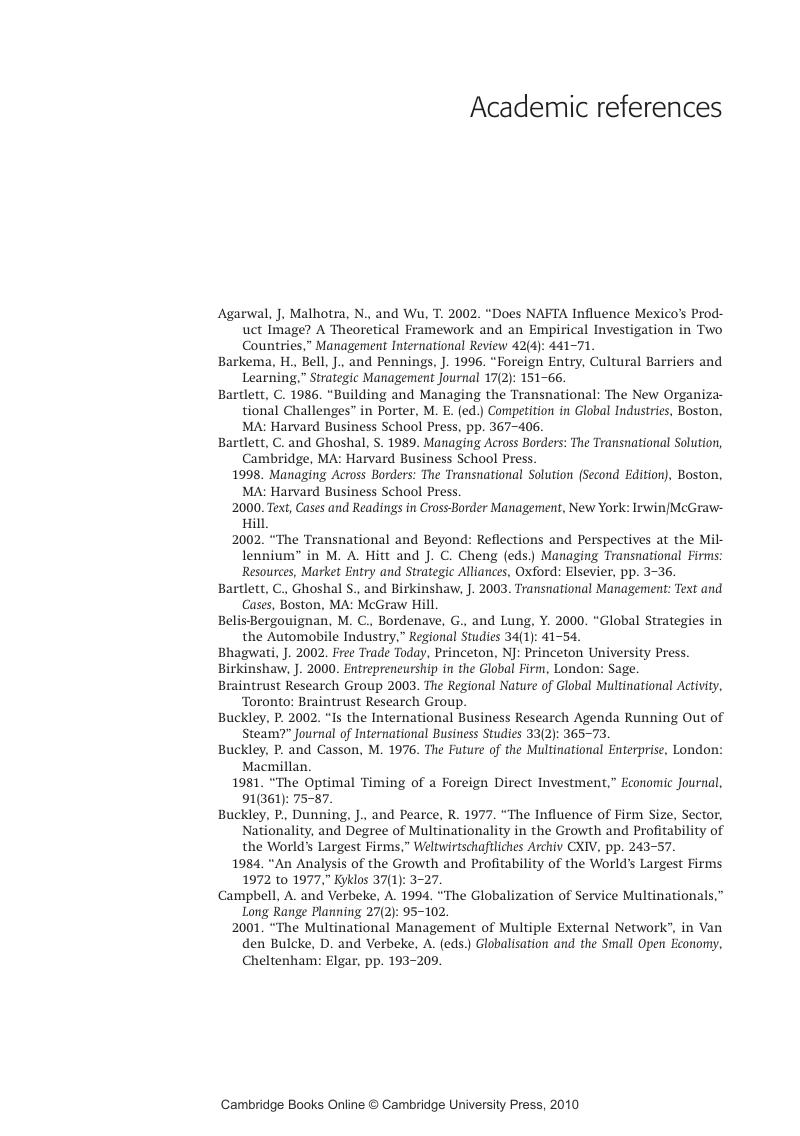Book contents
- Frontmatter
- Contents
- List of figures
- List of tables
- Acknowledgments
- Chapter 1 Introduction
- Chapter 2 Regional multinationals: the data
- Chapter 3 Two regional strategy frameworks
- Chapter 4 Regional and global strategies of multinational enterprises
- Chapter 5 Retail multinationals and globalization
- Chapter 6 Banking multinationals
- Chapter 7 Pharmaceutical and chemical multinationals
- Chapter 8 Automotive multinationals
- Chapter 9 Profiles of leading multinational enterprises
- Chapter 10 Analysis of the regional and global strategies of large firms
- Chapter 11 Regional multinationals and government policy
- Chapter 12 Regional multinationals: the new research agenda
- Appendix: The 500 companies with triad percent sales, alphabetical, 2001
- Company notes
- Case references
- Academic references
- Author index
- General index
- References
Academic references
Published online by Cambridge University Press: 18 December 2009
- Frontmatter
- Contents
- List of figures
- List of tables
- Acknowledgments
- Chapter 1 Introduction
- Chapter 2 Regional multinationals: the data
- Chapter 3 Two regional strategy frameworks
- Chapter 4 Regional and global strategies of multinational enterprises
- Chapter 5 Retail multinationals and globalization
- Chapter 6 Banking multinationals
- Chapter 7 Pharmaceutical and chemical multinationals
- Chapter 8 Automotive multinationals
- Chapter 9 Profiles of leading multinational enterprises
- Chapter 10 Analysis of the regional and global strategies of large firms
- Chapter 11 Regional multinationals and government policy
- Chapter 12 Regional multinationals: the new research agenda
- Appendix: The 500 companies with triad percent sales, alphabetical, 2001
- Company notes
- Case references
- Academic references
- Author index
- General index
- References
Summary

- Type
- Chapter
- Information
- The Regional MultinationalsMNEs and 'Global' Strategic Management, pp. 264 - 269Publisher: Cambridge University PressPrint publication year: 2005



